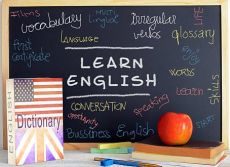800 câu trắc nghiệm Điền từ Tiếng Anh có đáp án cực hay
Chọn hình thức trắc nghiệm (20 câu/60 phút)
Chọn phần
-
Câu 1:
(4) ....................
Community Colleges, institutions of higher (1) _______ offering two-year programs of general study or technical or vocational training. Many (2) _______ receive the first two years (freshman and sophomore years) of postsecondary education at community colleges (3) _______ pursuing a bachelor's degree at a four-year institution. Community colleges (4) _______ a variety of programs and degrees, (5) _______ certificate programs that require less than two years of work in a specific area of study; terminal associate degrees in professional and technical programs; and associate degrees that may be transferred toward the completion of a bachelor’s degree.
A. supply
B. send
C. offer
D. give
-
Câu 2:
(5) ....................
Community Colleges, institutions of higher (1) _______ offering two-year programs of general study or technical or vocational training. Many (2) _______ receive the first two years (freshman and sophomore years) of postsecondary education at community colleges (3) _______ pursuing a bachelor's degree at a four-year institution. Community colleges (4) _______ a variety of programs and degrees, (5) _______ certificate programs that require less than two years of work in a specific area of study; terminal associate degrees in professional and technical programs; and associate degrees that may be transferred toward the completion of a bachelor’s degree.
A. including
B. having
C. consisting
D. combining
-
Câu 3:
(1) ....................
Two-year postsecondary institutions were first (1) _______ in the United States in the (2) _______ 20th century. These schools were called junior colleges (3) _______ their main function was to offer only the beginning (4) _______ of general college study. Credits earned at junior colleges could be transferred to another institution (5) _______ students could complete their final years of college. Now called community colleges, these two-year institutions (6) _______ offer courses of general academic study to recent high school graduates. However, they (7) _______ try to serve the educational needs of a (8) _______ segment of the community, including older students and workers. Today, (9) _______ community colleges offer technical, vocational, preprofessional, and adult-education programs in addition to (10) _______ academic programs.
A. established
B. built
C. created
D. made
-
Câu 4:
(2) ....................
Two-year postsecondary institutions were first (1) _______ in the United States in the (2) _______ 20th century. These schools were called junior colleges (3) _______ their main function was to offer only the beginning (4) _______ of general college study. Credits earned at junior colleges could be transferred to another institution (5) _______ students could complete their final years of college. Now called community colleges, these two-year institutions (6) _______ offer courses of general academic study to recent high school graduates. However, they (7) _______ try to serve the educational needs of a (8) _______ segment of the community, including older students and workers. Today, (9) _______ community colleges offer technical, vocational, preprofessional, and adult-education programs in addition to (10) _______ academic programs.
A. front
B. before
C. soon
D. early
-
Câu 5:
(3) ....................
Two-year postsecondary institutions were first (1) _______ in the United States in the (2) _______ 20th century. These schools were called junior colleges (3) _______ their main function was to offer only the beginning (4) _______ of general college study. Credits earned at junior colleges could be transferred to another institution (5) _______ students could complete their final years of college. Now called community colleges, these two-year institutions (6) _______ offer courses of general academic study to recent high school graduates. However, they (7) _______ try to serve the educational needs of a (8) _______ segment of the community, including older students and workers. Today, (9) _______ community colleges offer technical, vocational, preprofessional, and adult-education programs in addition to (10) _______ academic programs.
A. because
B. although
C. however
D. besides
-
Câu 6:
(4) ....................
Two-year postsecondary institutions were first (1) _______ in the United States in the (2) _______ 20th century. These schools were called junior colleges (3) _______ their main function was to offer only the beginning (4) _______ of general college study. Credits earned at junior colleges could be transferred to another institution (5) _______ students could complete their final years of college. Now called community colleges, these two-year institutions (6) _______ offer courses of general academic study to recent high school graduates. However, they (7) _______ try to serve the educational needs of a (8) _______ segment of the community, including older students and workers. Today, (9) _______ community colleges offer technical, vocational, preprofessional, and adult-education programs in addition to (10) _______ academic programs.
A. school
B. level
C. stage
D. space
-
Câu 7:
(5) ....................
Two-year postsecondary institutions were first (1) _______ in the United States in the (2) _______ 20th century. These schools were called junior colleges (3) _______ their main function was to offer only the beginning (4) _______ of general college study. Credits earned at junior colleges could be transferred to another institution (5) _______ students could complete their final years of college. Now called community colleges, these two-year institutions (6) _______ offer courses of general academic study to recent high school graduates. However, they (7) _______ try to serve the educational needs of a (8) _______ segment of the community, including older students and workers. Today, (9) _______ community colleges offer technical, vocational, preprofessional, and adult-education programs in addition to (10) _______ academic programs.
A. what
B. which
C. where
D. when
-
Câu 8:
(6) ....................
Two-year postsecondary institutions were first (1) _______ in the United States in the (2) _______ 20th century. These schools were called junior colleges (3) _______ their main function was to offer only the beginning (4) _______ of general college study. Credits earned at junior colleges could be transferred to another institution (5) _______ students could complete their final years of college. Now called community colleges, these two-year institutions (6) _______ offer courses of general academic study to recent high school graduates. However, they (7) _______ try to serve the educational needs of a (8) _______ segment of the community, including older students and workers. Today, (9) _______ community colleges offer technical, vocational, preprofessional, and adult-education programs in addition to (10) _______ academic programs.
A. still
B. already
C. yet
D. recently
-
Câu 9:
(7) ....................
Two-year postsecondary institutions were first (1) _______ in the United States in the (2) _______ 20th century. These schools were called junior colleges (3) _______ their main function was to offer only the beginning (4) _______ of general college study. Credits earned at junior colleges could be transferred to another institution (5) _______ students could complete their final years of college. Now called community colleges, these two-year institutions (6) _______ offer courses of general academic study to recent high school graduates. However, they (7) _______ try to serve the educational needs of a (8) _______ segment of the community, including older students and workers. Today, (9) _______ community colleges offer technical, vocational, preprofessional, and adult-education programs in addition to (10) _______ academic programs.
A. and
B. also
C. too
D. as well
-
Câu 10:
(8) ....................
Two-year postsecondary institutions were first (1) _______ in the United States in the (2) _______ 20th century. These schools were called junior colleges (3) _______ their main function was to offer only the beginning (4) _______ of general college study. Credits earned at junior colleges could be transferred to another institution (5) _______ students could complete their final years of college. Now called community colleges, these two-year institutions (6) _______ offer courses of general academic study to recent high school graduates. However, they (7) _______ try to serve the educational needs of a (8) _______ segment of the community, including older students and workers. Today, (9) _______ community colleges offer technical, vocational, preprofessional, and adult-education programs in addition to (10) _______ academic programs.
A. less
B. fewer
C. greater
D. more
-
Câu 11:
(9) ....................
Two-year postsecondary institutions were first (1) _______ in the United States in the (2) _______ 20th century. These schools were called junior colleges (3) _______ their main function was to offer only the beginning (4) _______ of general college study. Credits earned at junior colleges could be transferred to another institution (5) _______ students could complete their final years of college. Now called community colleges, these two-year institutions (6) _______ offer courses of general academic study to recent high school graduates. However, they (7) _______ try to serve the educational needs of a (8) _______ segment of the community, including older students and workers. Today, (9) _______ community colleges offer technical, vocational, preprofessional, and adult-education programs in addition to (10) _______ academic programs.
A. almost
B. most
C. nearly
D. really
-
Câu 12:
(10) ....................
Two-year postsecondary institutions were first (1) _______ in the United States in the (2) _______ 20th century. These schools were called junior colleges (3) _______ their main function was to offer only the beginning (4) _______ of general college study. Credits earned at junior colleges could be transferred to another institution (5) _______ students could complete their final years of college. Now called community colleges, these two-year institutions (6) _______ offer courses of general academic study to recent high school graduates. However, they (7) _______ try to serve the educational needs of a (8) _______ segment of the community, including older students and workers. Today, (9) _______ community colleges offer technical, vocational, preprofessional, and adult-education programs in addition to (10) _______ academic programs.
A. general
B. private
C. public
D. own
-
Câu 13:
(1) ..................
Approximately one-third of the Arctic (1) _______ is underlain by continental shelf, (2) _______ includes a broad shelf north of Eurasia and the narrower shelves of North America and Greenland. Seaward of the continental shelves (3) _______ the Arctic Basin proper, which is subdivided (4) _______ a set of three parallel ridges and four basins (also (5) _______ as deeps).
A. Sea
B. Ocean
C. Lake
D. River
-
Câu 14:
(2) ....................
Approximately one-third of the Arctic (1) _______ is underlain by continental shelf, (2) _______ includes a broad shelf north of Eurasia and the narrower shelves of North America and Greenland. Seaward of the continental shelves (3) _______ the Arctic Basin proper, which is subdivided (4) _______ a set of three parallel ridges and four basins (also (5) _______ as deeps).
A. it
B. whom
C. that
D. which
-
Câu 15:
(3) ....................
Approximately one-third of the Arctic (1) _______ is underlain by continental shelf, (2) _______ includes a broad shelf north of Eurasia and the narrower shelves of North America and Greenland. Seaward of the continental shelves (3) _______ the Arctic Basin proper, which is subdivided (4) _______ a set of three parallel ridges and four basins (also (5) _______ as deeps).
A. is
B. lies
C. runs
D. stands
-
Câu 16:
(4) ....................
Approximately one-third of the Arctic (1) _______ is underlain by continental shelf, (2) _______ includes a broad shelf north of Eurasia and the narrower shelves of North America and Greenland. Seaward of the continental shelves (3) _______ the Arctic Basin proper, which is subdivided (4) _______ a set of three parallel ridges and four basins (also (5) _______ as deeps).
A. on
B. in
C. into
D. onto
-
Câu 17:
(5) ....................
Approximately one-third of the Arctic (1) _______ is underlain by continental shelf, (2) _______ includes a broad shelf north of Eurasia and the narrower shelves of North America and Greenland. Seaward of the continental shelves (3) _______ the Arctic Basin proper, which is subdivided (4) _______ a set of three parallel ridges and four basins (also (5) _______ as deeps).
A. known
B. considered
C. thought
D. remembered
-
Câu 18:
(1) ....................
These features were discovered and explored (1) _______ in the late 1940s. The Lomonosov Ridge, the major ridge, cuts the Arctic Basin (2) _______ in half, extending as a submarine bridge 1,800 km (1,100 mi) (3) _______ Siberia to the northwestern tip of Greenland. Parallel (4) _______ it are two shorter ridges: the Alpha Ridge on the North American (5) _______, defining the Canada and Makarov basins, (6) _______ the Arctic Mid-Ocean Ridge on the Eurasian side, (7) _______ the Nansen and Amundsen basins. The average (8) _______ of the Arctic Ocean is only 1,300 m (4,300 ft) (9) _______ the vast shallow expanses on the continental shelves. The deepest (10) _______ in the Arctic Ocean is 5,450 m (17,880 ft).
A. starting
B. beginning
C. appearance
D. creation
-
Câu 19:
(2) ....................
These features were discovered and explored (1) _______ in the late 1940s. The Lomonosov Ridge, the major ridge, cuts the Arctic Basin (2) _______ in half, extending as a submarine bridge 1,800 km (1,100 mi) (3) _______ Siberia to the northwestern tip of Greenland. Parallel (4) _______ it are two shorter ridges: the Alpha Ridge on the North American (5) _______, defining the Canada and Makarov basins, (6) _______ the Arctic Mid-Ocean Ridge on the Eurasian side, (7) _______ the Nansen and Amundsen basins. The average (8) _______ of the Arctic Ocean is only 1,300 m (4,300 ft) (9) _______ the vast shallow expanses on the continental shelves. The deepest (10) _______ in the Arctic Ocean is 5,450 m (17,880 ft).
A. most
B. mostly
C. all
D. almost
-
Câu 20:
(3) ....................
These features were discovered and explored (1) _______ in the late 1940s. The Lomonosov Ridge, the major ridge, cuts the Arctic Basin (2) _______ in half, extending as a submarine bridge 1,800 km (1,100 mi) (3) _______ Siberia to the northwestern tip of Greenland. Parallel (4) _______ it are two shorter ridges: the Alpha Ridge on the North American (5) _______, defining the Canada and Makarov basins, (6) _______ the Arctic Mid-Ocean Ridge on the Eurasian side, (7) _______ the Nansen and Amundsen basins. The average (8) _______ of the Arctic Ocean is only 1,300 m (4,300 ft) (9) _______ the vast shallow expanses on the continental shelves. The deepest (10) _______ in the Arctic Ocean is 5,450 m (17,880 ft).
A. in
B. at
C. from
D. between














